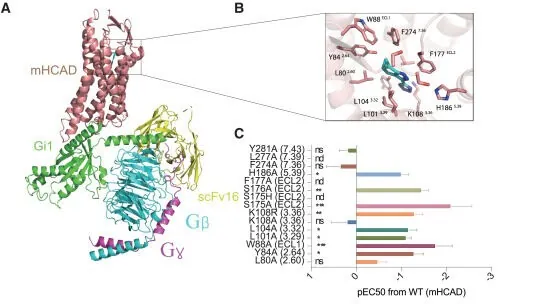
Breakthrough Gene Therapy Offers Hope to Millions Suffering From Chronic Pain!
2024-12-18
Author: Jia
Introduction
Recent advancements in the field of pain management may soon offer hope to the millions globally afflicted by chronic pain. Researchers from the UNC School of Medicine have made groundbreaking strides in developing a gene therapy that could effectively "turn off" pain signals in the body, using innovative chemogenetic techniques.
Pain is not just an unpleasant sensation but a vital defense mechanism meant to protect the body from injury or harm. However, conditions like nerve damage, injuries, or infections can lead to persistent pain that renders daily life unbearable. While traditional pain management strategies may provide temporary relief, they often come with side effects and do not address the root cause of chronic pain.
The Researchers Behind the Breakthrough
Dr. Bryan L. Roth and Dr. Grégory Scherrer, leading researchers at UNC, have pioneered a method that could revolutionize pain treatment. They have demonstrated the potential of their new gene therapy to mitigate acute and inflammatory pain in mouse models, laying the groundwork for future applications in humans. According to Roth, their approach could allow for a simple delivery mechanism via a harmless pill that can deactivate pain-transmitting neurons easily.
The Evolution of Chemogenetics
Roth’s journey toward this revolutionary therapy began in the 1990s, when he, then a professor at Case Western Reserve University, sought ways to engineer therapeutics that could mitigate diseases without rampant side effects. His dedication to understanding the neural pathways eventually led him to devise a method known as "chemogenetics," which uses engineered protein receptors that can be selectively activated by an inert compound, marking a significant leap in neuroscience.
In essence, this innovative tool enables researchers to activate or deactivate specific neurons by introducing a drug-like compound into the body, thereby mimicking or countering the effects of conventional medication.
A Game Changer in Chronic Pain Management
The current research has particularly focused on receptors in the peripheral nervous system (PNS), which is crucial for transmitting sensations like touch and pain to the brain. While chemogenetic techniques have been previously explored in the central nervous system, applying them to the PNS has presented significant challenges. However, after extensive research, the team successfully developed a new system based on the hydroxycarboxylic acid receptor 2 (HCA2), which plays a role in inflammation management.
Using a newly engineered receptor that responds only to a specific inert compound, the team was able to inhibit the nociceptors—neurons responsible for sending pain signals. This revolutionary step means that pain perception can be significantly reduced, diminishing the need for increased stimuli to perceive pain, essentially offering a "pain-free switch."
The Role of Gene Therapy
While still in the experimental phase, the implications of this research are profound. The gene therapy method utilized an adeno-associated virus to deliver the gene encoding the modified receptor into the pain neurons of a mouse model, leading to promising results. This approach opens the door to potential human applications in the future, with a focus on chronic pain management that could transform how we treat pain disorders.
Looking Ahead
The implications of this research extend well beyond just pain relief. With the aim of partnering with initiatives like the National Institutes of Health's BRAIN Initiative, which aims to map every type of cell in the human brain, Roth and Scherrer’s work could yield new insights into the vast landscape of the nervous system.
As Scherrer noted, there are myriad types of PNS neurons whose functions remain misunderstood. By advancing their research using this novel chemogenetic approach, scientists can investigate how these neural pathways contribute to sensory perception and develop targeted therapies for various neurological conditions.
This groundbreaking discovery could be a game-changer in the fields of pain management and neuroscience, leading to safer, more effective treatments for chronic sufferers. The future of pain relief is not just a dream anymore; it could be just a pill away! Stay tuned for more updates on this promising research!



 Brasil (PT)
Brasil (PT)
 Canada (EN)
Canada (EN)
 Chile (ES)
Chile (ES)
 España (ES)
España (ES)
 France (FR)
France (FR)
 Hong Kong (EN)
Hong Kong (EN)
 Italia (IT)
Italia (IT)
 日本 (JA)
日本 (JA)
 Magyarország (HU)
Magyarország (HU)
 Norge (NO)
Norge (NO)
 Polska (PL)
Polska (PL)
 Schweiz (DE)
Schweiz (DE)
 Singapore (EN)
Singapore (EN)
 Sverige (SV)
Sverige (SV)
 Suomi (FI)
Suomi (FI)
 Türkiye (TR)
Türkiye (TR)